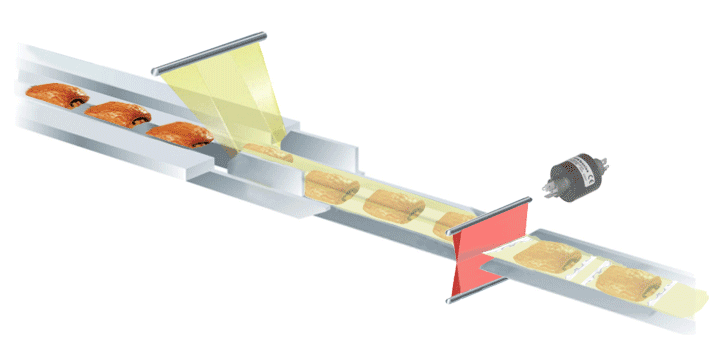Slip rings are at the heart of modern packaging applications
The packaging sector is facing various challenges arising from individual machine components in different applications. Not only does it ensure that production runs without interruption, it also needs to ensure optimal reliability, while maintaining the appropriate operating speeds in all aspects of the process to ensure seamless and error-free processing.
In packaging applications ranging from carton board processing to bagged cement bulk packaging, slip rings (also known as collector rings, rotary electrical interfaces and conductive rings) are widely used for their versatility. Slip rings, which have been used in packaging for more than 30 years, are electromechanical devices that transmit power and electrical signals from fixed to rotating devices. The advantage is that when the slip ring connector rotates without restriction, damage to the wire during rotation can be avoided.

Typically, a slip ring contains a fixed graphite or metal joint or brush that rubs against the outer diameter of a rotating metal ring. When the slip ring rotates, current or signals can be transmitted between the brush and the metal ring to achieve connection. If multiple circuits are required, slip ring/brush assemblies can be added along the axis of rotation.
Slip rings can not only improve mechanical performance and simplify system operation; they can also avoid related problems caused by damaged wires catching the mobile interface.
These advantages benefit machine operators in all areas of application. They transmit power and encoder signals to winders and rewinders for pressed carton board, and also power cutters and rewinders in film production. Slip rings also drive the heat-sealing process in candy packaging and are used in tobacco product processing.
Of course, this versatility is a big advantage, but proper specification and maintenance are also key. The type of slip ring used will inevitably be restricted by a series of factors, including operating speed; current and voltage of the system; space size; protection level, data and bus system in operation; media such as water, oil or compressed air. Slip rings are typically made of copper or brass and are plated with gold, silver, or rhodium depending on the application.
Users can choose different types of slip rings based on specific application requirements.
Mercury slip rings have low resistance and stable connections. However, unlike carbon brush slip rings, they use liquid mercury as the conductive medium during rotation, integrating the fixed end and the rotating end. However, there are safety concerns with the use of mercury, especially in industries such as food and beverage and pharmaceuticals, or other places where contamination creates hazards. These industries will specify the type of precious metal joint.
Carbon copper slip rings, meanwhile, are best suited for rotating applications up to 3000 rpm, such as stranded cable equipment.
In addition, it has a modular system and is particularly suitable for transmitting information via Ethernet or for use with sensitive analog signals. Its typical rotation speed is up to 20 rpm.
In applications where space is limited or the rotational speed is too low (no more than 5 rpm), pancake system slip rings or “pancake” slip rings can be used.
In a pancake slip ring, the conductor is located on a flat disk, just as the concentric ring is centered on the rotating shaft. This configuration weighs more for the same circuit, has higher capacitance and lateral torque, has greater brush wear, and tends to collect wear debris on the vertical axis. However, it reduces the axial length of the circuit, has a service life of up to 4 million cycles, and can be maintenance-free in some applications, making it an ideal choice for many applications. It is worth noting that 16A is its commonly used Maximum current.
Nowadays, people are paying more and more attention to the research and development of disc slip rings. The system rotates faster and may be able to introduce higher currents in the near future.
As with all production-critical components, it is critical to work with a supplier who can both develop details for a specific application and recommend a design and provide a suitable solution.

